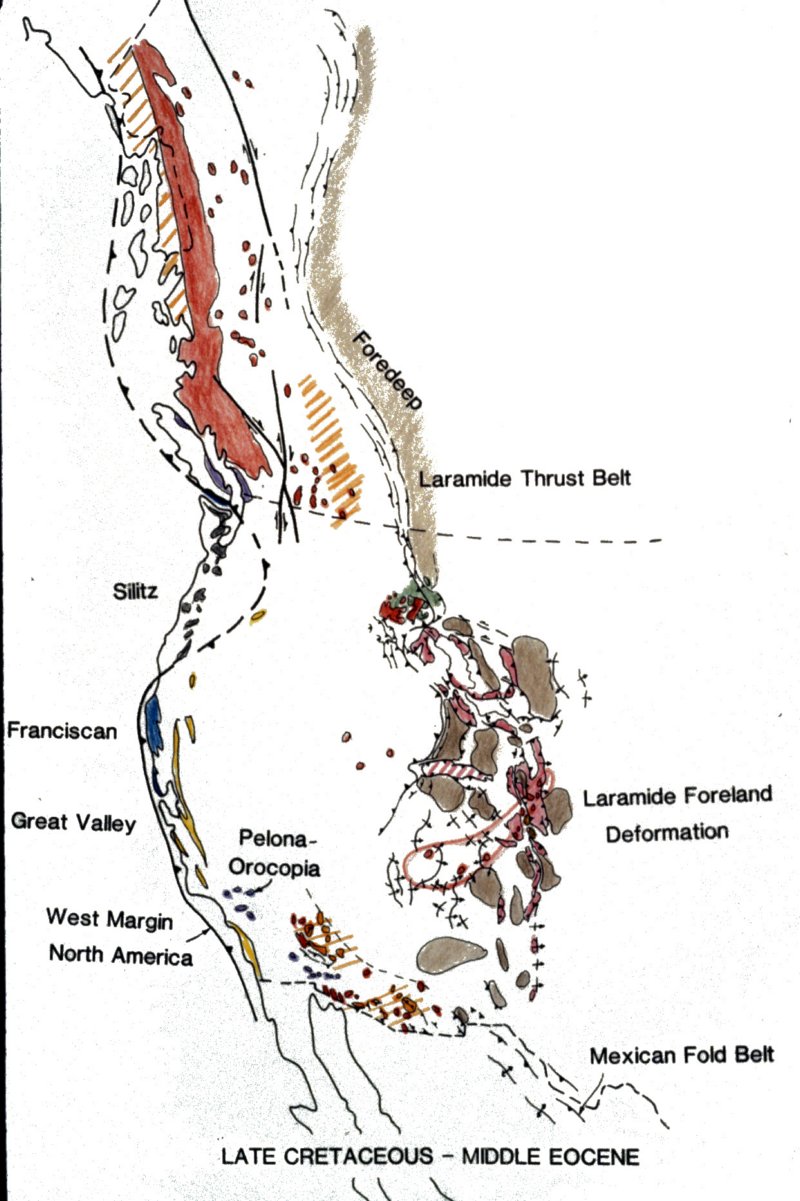

In this image we can see a change in the behavior of the Arc environment. To the north in Canada we find the intrusive arc continues to emplace large igneous bodies. This is also true in the Mojave region in the southwest corner of north America, but as discussed earlier, the fold and thrust belt active along much of western NA is not acive here. Because most of the passive margin sequence has been sheared off by the late Permian truncation, the deformation is complicated by the presence of thick continental basement. The deformation is accomplished by much more ductile shear and metamorphism. ------------------------------------------During the end Cretaceous, in between the Canadian arc and the Mojave region, the arc intrusions stop but the mélanges deposited in the accretionary wedges continue. Subduction remains active but the arc extinguishes…Why? Looking further east, you can see that large scale inter-continental deformation is occurring via block uplifts of Precambrian basement and deposition of sediments in adjacent basins. It is suggested that these observations are a consequence of a change in the dip of the subducting slab. As the slab-dip shallows, subduction continues to build the accretionary wedge, but the down-going slab is not deep enough or hot enough to melt/dewater and produce igneous activity. The mantle wedge where the slab rolls over and begins to dip down is displaced eastward. Where the slab does begin to dip, heat is concentrated against the base of the crust, but because the heat is applied to the base of thick continental crust, the igneous activity is expressed as the block uplifts rather than Arc volcanics. It is not known why the slab changed from steeply dipping to shallowly dipping, but research in western Argentina (where there is also shallow-slab subduction), may shed light on this process.
Created with Web Album Generator